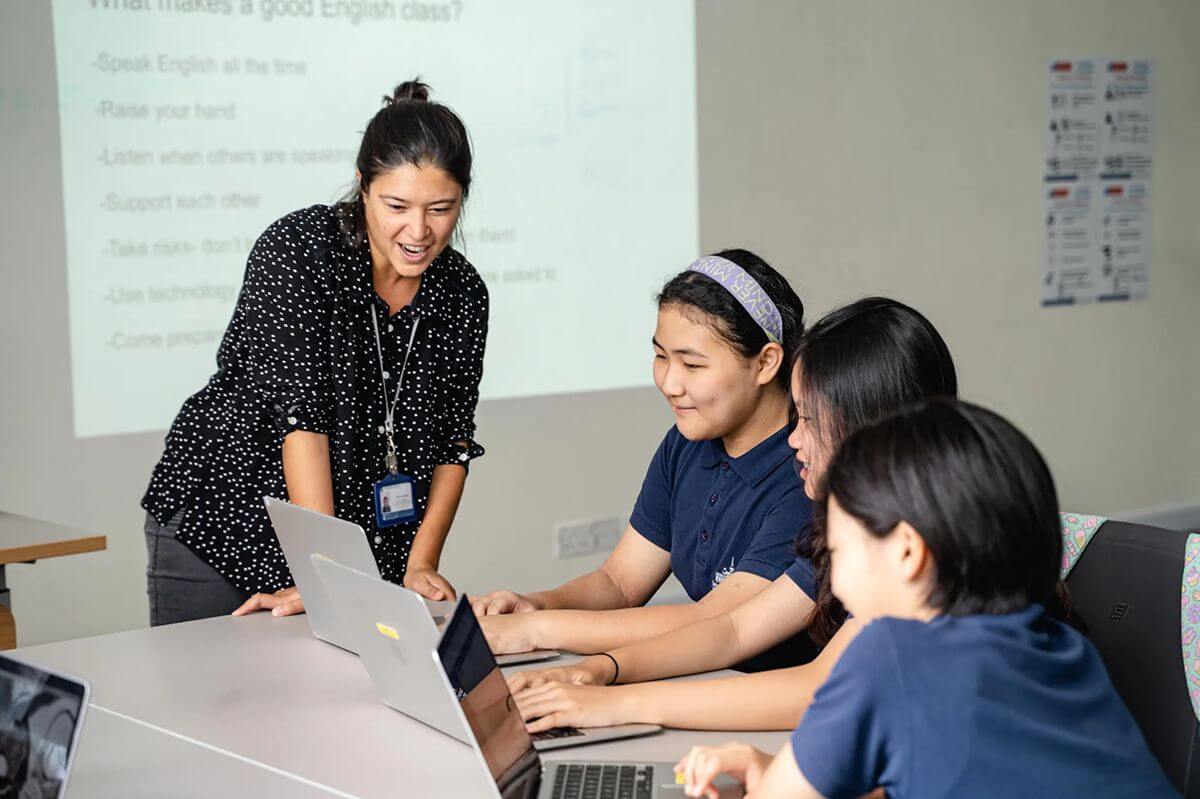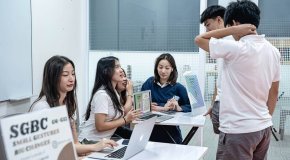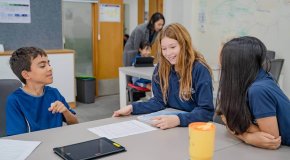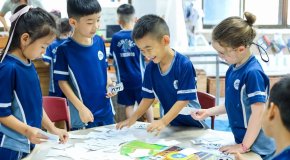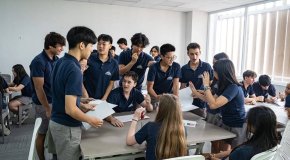8 Practical Tips for Using Technology In The Classroom
Using technology in the classroom allows students to approach educational content seamlessly and effectively. Driven by this, ISHCMC has integrated innovative technology applications to deliver an engaging and relevant learning experience for students. Let’s explore how technology enhances student engagement in learning spaces and how ISHCMC equips them for a rapidly evolving world in this article.
Benefits of Using Technology In The Classroom
Incorporating technology into the classroom provides our students and educators a more dynamic, personalized, and efficient experience through:
- Enhanced engagement: Interactive digital tools help our teachers capture students’ attention better when creating an enjoyable and immersive learning experience.
- Efficient assessment: Digital assessment solutions offer instant feedback, aiding teachers in identifying learning gaps and tailoring their instruction plans accordingly.
- Diverse resources: Technologies facilitate students’ flexible access to educational materials beyond traditional textbooks, helping them gain various perspectives.
- Streamlined administrative tasks: Automating routine tasks enables our teachers to focus more on personalizing students’ learning with meaningful interactions.
- Data-driven insights: Our teachers can monitor students’ performance and explore strategies to improve academic results with data-driven decisions.
- Flexible learning environments: Digital spaces improve students’ learning progress with proper support tailored to their preferences and speeds.
How ISHCMC Uses Technology in the Elementary Classroom
1. Use Multimedia Elements in Presentations
We equip our classrooms with technology-rich facilities to bring lessons to life. Our teachers can make daily teachings more engaging for students with videos, animations, or diagrams by using interactive whiteboards, digital projectors, or tablet connectivity.
Multimedia presentations bring learning to life at ISHCMC, engaging students through interactive content and multi-sensory experiences
Students feel free to drag, sort, and manipulate digital objects while interacting with the touch-screen display to deepen their knowledge and understanding. This experiential approach benefits younger students by allowing them to thrive on kinesthetic learning methods.
2. Create Podcasts
Audio learning is a cornerstone of ISHCMC’s literacy and language development approach. We offer a recording studio for students to make presentations, exposing them to diverse voices and storytelling styles.
Beyond listening, ISHCMC elementary students can create their own podcasts with child-friendly recording equipment and editing software. Many parents experience positive progress in their enthusiasm for audio learning, extending beyond the classroom into their homes. This fact proves the effectiveness of using technology in the classroom to encourage self-directed learning.
3. Collect Student Feedback
ISHCMC is actively open to child-friendly feedback through digital survey platforms. Our students can leave their thoughts with colorful emoticons, simple rating scales, and voice recording options to express their understanding and preferences toward learning activities. This immediate feedback enables teachers to make real-time adjustments to instruction.
The anonymity of these computer-based feedback mechanisms encourages honest responses from all students, including students who might otherwise be reticent to speak up in traditional settings. This technology enables self-reflection among children and provides teachers with an understanding of their students’ needs.
4. Create Engaging Assessments
Technology offers testing options that can make evaluations more interactive and meaningful. Web-based quizzes, electronic portfolios, video presentations, and project work using digital tools provide several possibilities for students to demonstrate understanding. Multiple assessment forms accommodate different learning styles and provide a better picture of student development.

The school employs adaptive assessment technology that adjusts to students’ responses, ensuring each learner’s appropriate level of challenge.Innovative assessment technologies at ISHCMC provide comprehensive insights into student progress beyond traditional grades. By embracing these innovative practices, ISHCMC sets the standard for technology-enhanced education, ensuring that students develop the skills they need to thrive in a rapidly evolving world.
5. Build Student Blogs
At ISHCMC, students are using Toddle as a dynamic digital tool to build and maintain their own blogs—spaces where they can reflect, create, and share their learning journeys in real time. These student-led blogs allow learners to express their thinking, document progress, and connect their experiences inside and outside the classroom.
It bridges student reflection with the PYP Units of Inquiry, supports meaningful evaluation of learning, and fosters stronger engagement between home and school. By unifying these elements within a single platform, Toddle enhances the visibility, coherence, and impact of student learning across our community.
6. Set Up a Game-Based Educational Platform
Various international schools integrate gamification into the learning curriculum, matching students’ performance levels. Carefully selected educational games align with curriculum objectives, particularly in mathematics and language arts, adapting in real-time to visualize students’ learning progress intuitively.
Moreover, teachers can track student progress through detailed analytics dashboards that assist in determining areas where extra support is needed. With this, parents can appreciate how this approach turns mundane skill practice into fun learning experiences that kids look forward to.
7. Play Simulations
ISHCMC’s technology-enhanced classrooms feature interactive screens where students collaborate on simulation activities related to science, social studies, and environmental studies.
For example, students can manipulate variables in an ecosystem simulation to observe how changes can impact plant and animal populations over time. These hands-on experiences develop critical thinking skills as children recognize patterns, make connections, and form evidence-based hypotheses. History and urban planning simulations further enrich children’s understanding of complex social systems and practice collaborative decision-making in real contexts.
8. Integrate Technology into the Curriculum
Rather than secluding technology as a separate subject, ISHCMC weaves digital technology into the everyday curriculum. Specifically, we apply modeling software to visualize math lessons and pronunciation analysis software for language lessons, which is appropriate for younger students.
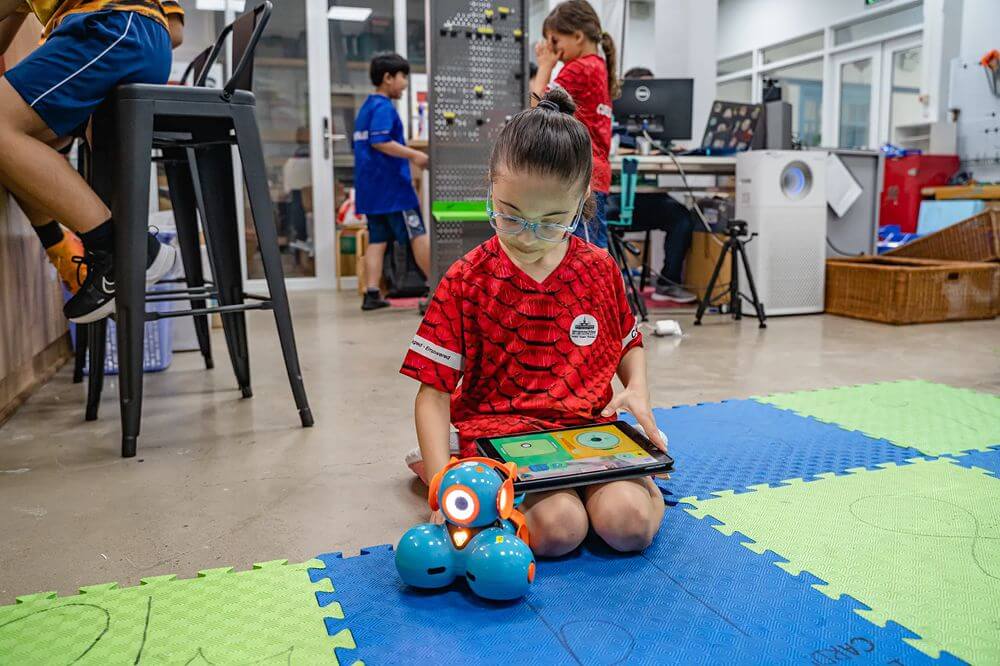
Educational technology specialists closely collaborate with our teachers in the classrooms to find out what digital tools best fit what learning goals. This team model guarantees that technology enhances learning and creates a healthy balance of students’ use of digital tools throughout their educational journeys.
Bring Technology into the Classroom with Confidence
Using technology in the classroom enhances learning experiences and prepares students for a successful future. At ISHCMC, we understand the need for integrating technology in the classroom to enrich learning, foster student growth, and ensure our children are future-ready.
With a balanced approach to technology in the classroom, ISHCMC creates a dynamic learning environment where students develop into confident digital citizens, equipped with the knowledge and adaptability to thrive in an ever-evolving world.
Give your child the advantage of a technology-enhanced international education. Discover ISHCMC’s innovative approach to learning and apply today.

